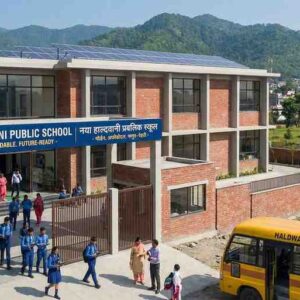The National Education Policy (NEP) 2020 has catalyzed a pivotal shift in the Indian educational landscape, diverting focus from traditional physical infrastructure such as playgrounds to enhancing academic quality and holistic education. This change reflects the evolving priorities of India’s educational system, where substantive learning outcomes are becoming more crucial than ever.
Reassessment of Educational Priorities
Emphasis on Academic Excellence:The NEP prioritizes the enhancement of core academic competencies across all levels of schooling. This involves a revamped curriculum designed to foster critical thinking, problem-solving skills, and adaptability among students. The policy’s emphasis is clear: the intellectual development of students is paramount, and the quality of education is not solely dependent on the availability of large physical spaces like playgrounds.
Holistic Development Beyond Physical Exercise:While physical education remains an integral part of the curriculum, NEP advocates for a more inclusive approach that also emphasizes mental, emotional, and social health. The policy encourages schools to integrate various forms of physical activity that do not require traditional playground settings, such as yoga, dance, and indoor sports, which can be conducted within multipurpose halls and smaller spaces.
Integration of Technology in Education
Leveraging Digital Platforms:Recognizing the limitations posed by physical space, especially in urban schools, the NEP promotes the use of digital technologies to transcend these boundaries. This includes the adoption of virtual labs and online learning platforms that can deliver comprehensive educational experiences, thus reducing the reliance on large physical playgrounds.
Resource Optimization:The policy also encourages schools to optimize existing resources by utilizing digital tools for both learning and physical education. This approach not only makes education more accessible but also more adaptable to various learning environments.
Utilizing Community Resources
Community Collaboration:The NEP supports the use of community facilities such as public parks, sports complexes, and cultural centers. This strategy allows schools with limited space to still provide students with necessary physical activities and helps integrate educational experiences with community development.
Real Data and Policy Impact
Government Statistics and Initiatives:Recent government data highlight the increasing enrollment rates in schools that have embraced digital education platforms, showcasing a positive correlation between the use of technology in education and improved academic performance. Furthermore, initiatives like the PM e-VIDYA and National Digital Education Architecture underline the government’s commitment to supporting schools in this digital transition, ensuring that all students have access to quality education, irrespective of their school’s infrastructure.
Conclusion
The NEP’s shift from emphasizing playgrounds to focusing on academic quality and holistic development signifies a modern approach to education in India. By prioritizing intellectual growth and leveraging technology, the policy aims to prepare students for the challenges of the future, ensuring that they receive a balanced and comprehensive education that transcends traditional boundaries. This strategy not only aligns with global educational trends but also ensures that Indian education remains relevant and effective in a rapidly changing world.













